Wind blade recycling
Wind blade recycling, a new challenge for wind energy
Energy efficiency Offshore wind Onshore wind
According to WindEurope, the European wind energy agency, around 52,000 tonnes of blades could be dismantled in the coming years and expects this figure to only reach 25,000 tonnes by 2025. For this reason, recycling, especially of wind turbine blades, is seen as one of the key challenges for the industry.
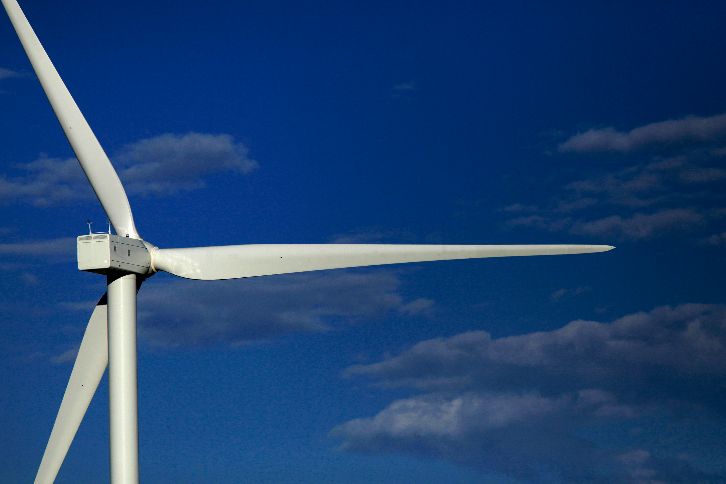
The wind energy sector is experiencing tremendous growth due to the global need for clean energy supply. According to data from the World Wind Energy Association (WWEA), 1.17 terawatt of wind power capacity was installed worldwide in 2024, 11.5% more than in the previous year.
A clean, inexhaustible and safe energy whose best features are, moreover, that the cost of maintenance is low, that they are mobile and that they generate hardly any waste, thus helping to avoid climate change and move towards energy transition. It should be borne in mind that most of the environmental impact produced by renewable energies is concentrated in two stages: manufacture and dismantling.
This is where the importance of wind turbine recycling comes in. In Spain alone, according to data from the Spanish Wind Energy Association (AEE), there are 1,416 wind farms with around 22,500 wind turbines installed. Spain, one of the countries where this technology is growing the most in Europe, ranks sixth in the world in terms of installed capacity, behind China, the United States, Germany, India and Brazil.
The European wind industry keeps the pledge that by 2025 100% of end-of-life blades will be reused, recycled or recovered, promoting a circular economy and showing its interest to this initiative.
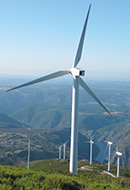
Wind Energy
What is it, how is it converted into electricity and what are its advantages?
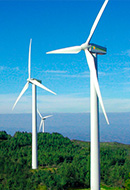
All about wind turbines
Discover what wind turbines, the giants of renewable energy, look like.
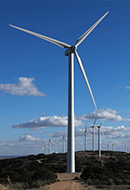
Onshore wind energy concepts
10 relevant terms to understand how this type of energy works.
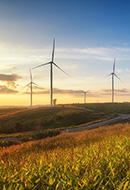
Wind measurement
We tell you how it is done, why it is so important and the latest news.
-E. Cámara, E. Segovia-
The repowering of wind turbines
The useful life of a wind turbine is around 25 years, although it can usually be extended to 30 years if the investment in maintenance is adequate. Most of its components are recyclable, although the challenge lies in recycling the wind blades efficiently. The materials from which they are made are mostly composites, such as fibreglass, carbon fibre or various resins, so separating them for recycling is particularly difficult and expensive.
Initially, and in keeping with the maxim of the circular economy, most of the wind turbine blades are being reused. This is part of the repowering strategy, as wind turbines are becoming increasingly more efficient and more powerful, so the old ones can be reassembled in other wind farms or in other countries. In addition, there are also initiatives that convert these blades into architectural or structural elements such as bridges or bicycle racks. However, it should be borne in mind that, according to WindEurope figures, this repowering means that in the next 2 to 3 years around 14,000 blades could be dismantled in Europe. Given the speed at which wind energy is growing, it is necessary to opt for other alternatives by 2030 as the volume of retired blades will increase rapidly.
Types of wind blade recycling
Although it is important to note that wind blades are inert, so they do not generate toxic emissions and their composition makes them absolutely safe for landfills, this is a significant waste of resources that moves away from the criteria of sustainability and circularity that prevail in the wind sector. Associations such as the European WindEurope are therefore calling for years now for a Europe-wide landfill ban on wind turbine blades. This would mean that the wind industry would commit to 100 % recycling or recovery of out-of-service blades.
For this reason, different projects and initiatives are being developed to promote blade recycling through different technologies. There are currently three main types of recycling applicable to wind blade components:
Wind turbine blade graveyard: a new challenge for wind energy
The term wind turbine blade graveyard refers to the growing issue of disposing of retired wind turbine blades. As wind turbines reach the end of their operational life, their large, composite blades pose significant disposal challenges. Due to their size and material, which often includes fiberglass and resin, these blades are difficult to recycle and tend to be accumulated in landfills or specialized storage sites.
The industry is actively seeking sustainable solutions, such as developing new recycling technologies and finding alternative uses for these materials. Addressing the wind turbine blade graveyard is crucial for improving the environmental impact of wind energy and ensuring the long-term sustainability of the industry.
Circular economy model at the Iberdrola Group
At Iberdrola, we work to be more respectful of nature in our three strategic sustainability areas: climate action, biodiversity protection, and circular economy.
For this reason, our sustainable business model is based on the circular economy model, a system for making the most of resources in which priority is given to reducing the use of new raw materials through efficiency in processes, product life extensions, and a firm commitment to the reuse and recycling of materials.







